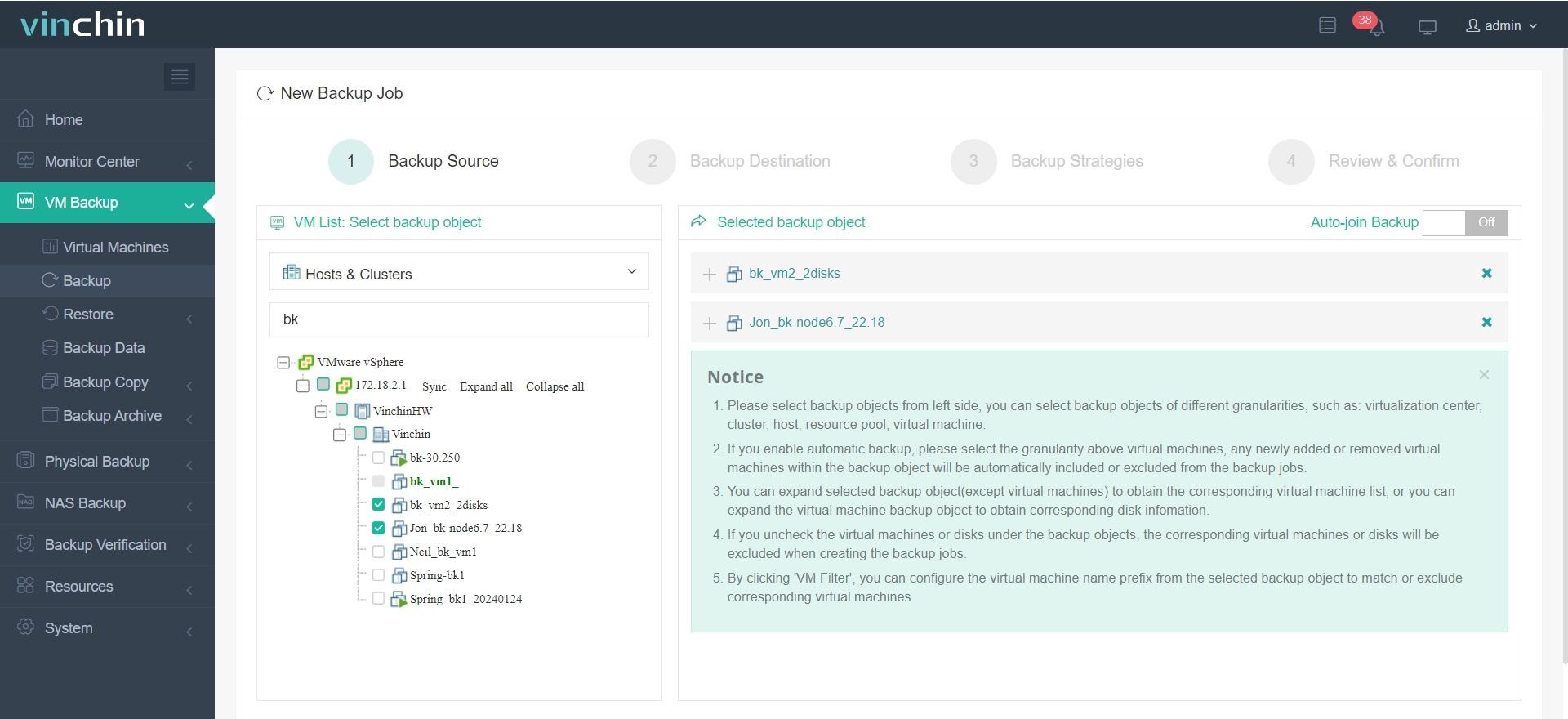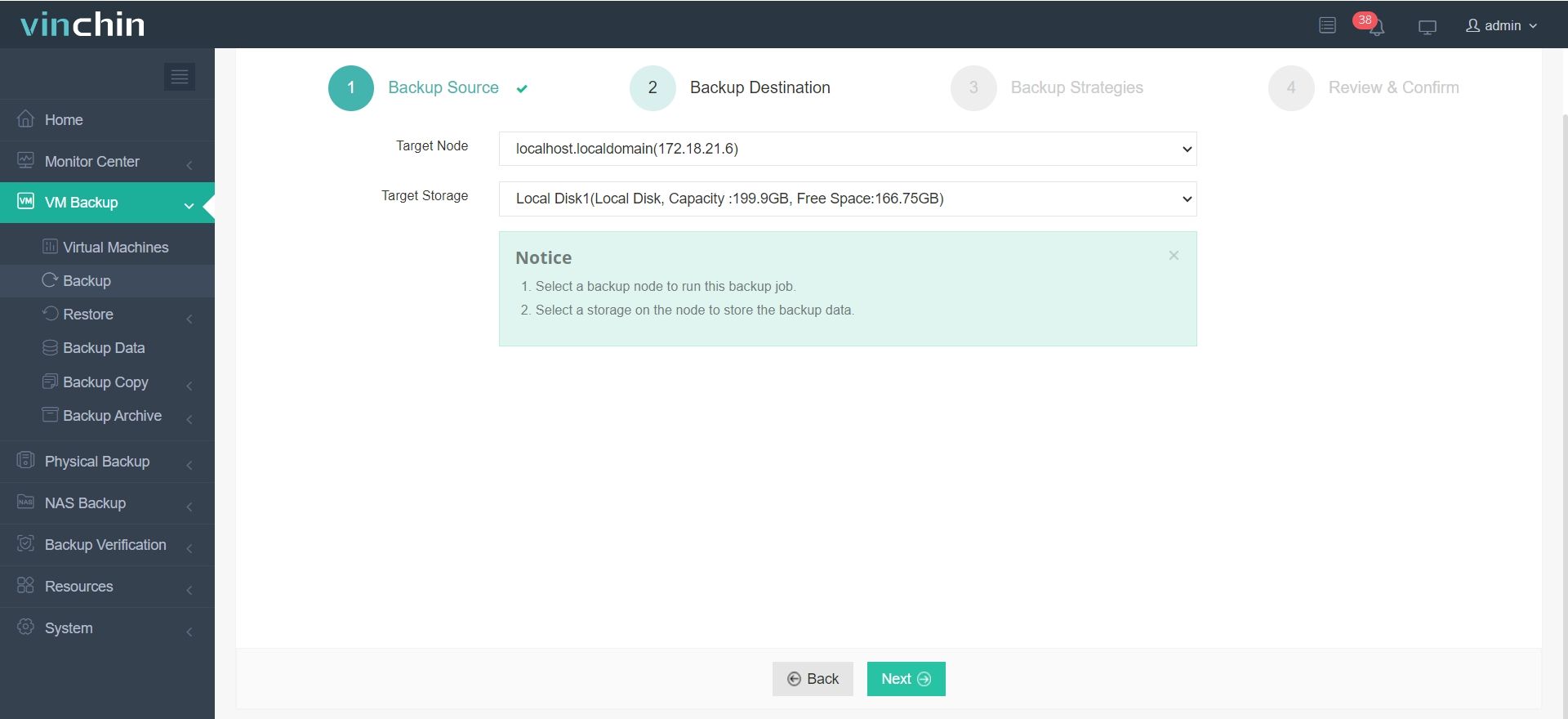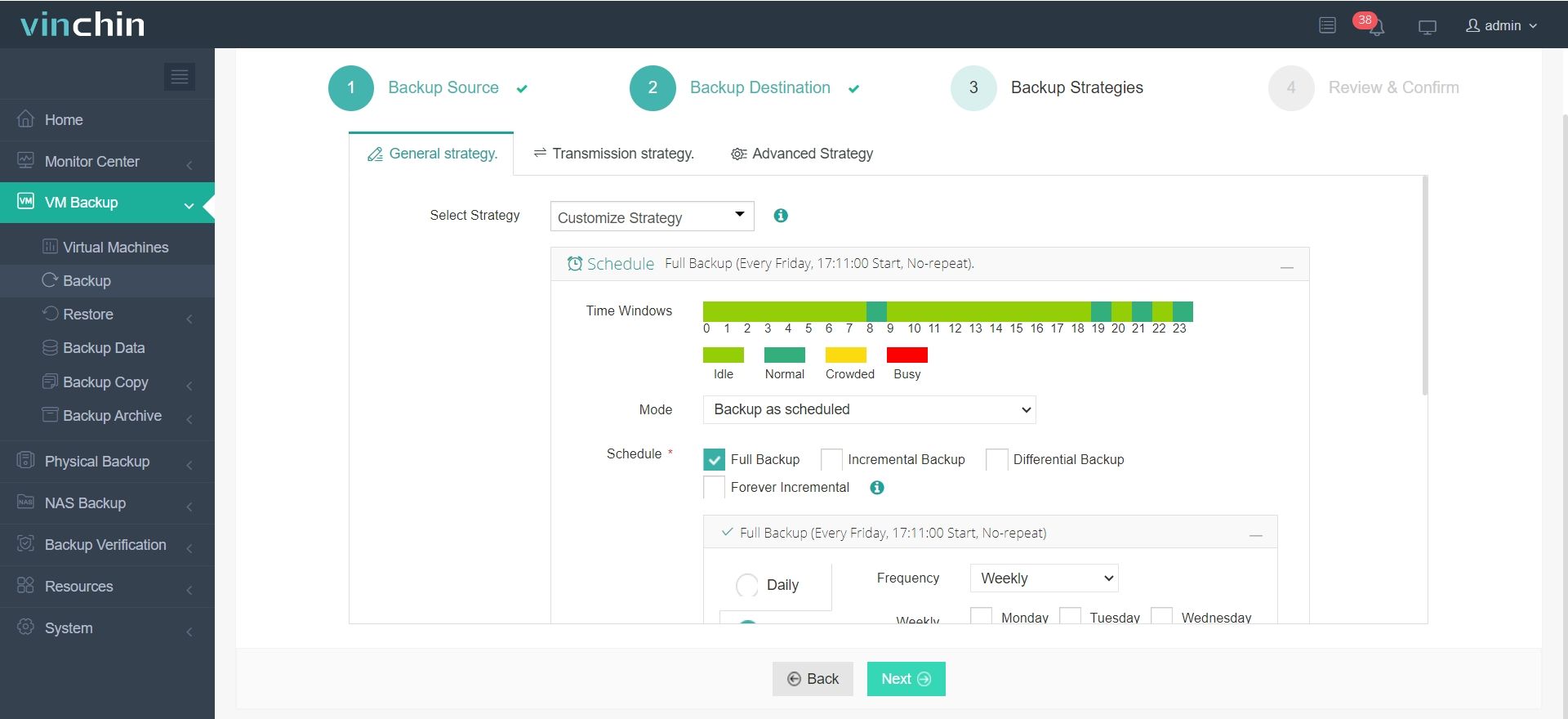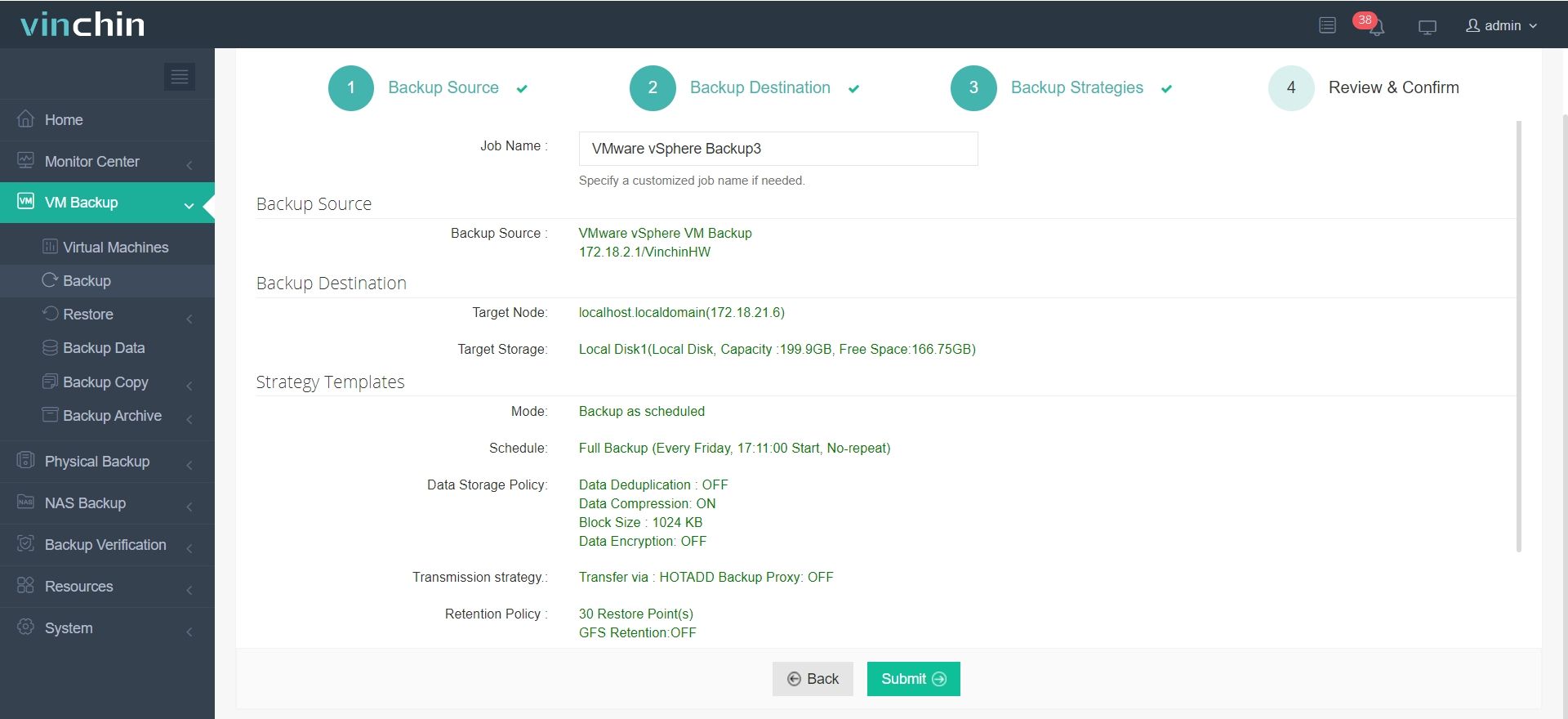-
Common backup approaches for VMware
-
VMware ESXi virtual machine backup best practices
-
Best way to backup VMware ESXi VM
-
VMware backup FAQs
-
Sum Up
VMware is the leading virtualization solution widely used by individuals and enterprises. No matter you are using it for test or production environments, it is essential to backup the virtual machines for any reasons.
Data protection: If the data is important, especially for production data, backing up the virtual machine can effectively avoid data loss.
Quick deployment: Usually, VM backup can be used as VM template so with the pre-configured VM backup, you can quickly deploy a new test or production environment.
There are many excellent methods for VMware backup and here I’ll introduce them from different aspects so you can select the best way to backup VMware ESXi virtual machine for your environment.
Common backup approaches for VMware
For different purposes, you can choose different backup methods.
Agent-based backup
It is also called traditional backup, involving installing backup agents on each VM to transfer data to backup repository. This method works like when you backup physical server or PC by installing backup software on the local machine so you might get started quickly.
Advantages:
Granular control: With the agent on every VM, you can easily specify backup jobs on needed VMs.
Offline backup: With the backup module installed on the VM, you can easily backup the VM to local storage without network.
Application awareness: Agents can interact directly with applications running on the VM so you can perform application-consistency backup for important applications.
Disadvantages:
Consuming resources: Because the agent is installed on every VM, the hardware resources like CPU and memory will also be consumed on every VM, causing resource wasting.
Cumbersome management: You might need to install an agent, create a backup job, or update the agent on every VM and that will take a lot of time.
Agentless backup
Agentless backup utilize the API provided by VMware such as vSphere vStorage API for Data Protection (VADP) to directly access VMs on ESXi host without installing an agent on each VM and this method also demonstrates the convenience of virtualization.
Advantages:
Simple management: Without install or managing agent on every VM, the management work for large environments will become simple and efficient.
Resource saving: The backup software is often deployed on an individual machine to manage the whole backup environment so the VM hardware resources will be saved.
Avoiding infecting VM performance: Agentless backup can minimize the impact on VM performance when the backup job is running because it won’t take so many resources like agent-based backup does.
Easy scalability: Whether you are adding or removing VMs, managing backup job becomes easier because you just need to do a host-level management job.
Disadvantages:
Limited application awareness: Agentless backup lacks the ability to directly interact with the applications running on the VM so you might not be able to perform application level backup.
Network overhead: Agentless backup often requires the good condition of network so it might cause increased network traffic and longer backup time.
File-level backup
Virtual machines are actually the files on the host so sometimes you can locate the folder of the VM and copy it to the backup repository as data backup.
Advantages:
Easy backup and recovery: You just need to perform a copy-and-paste backup and put it back to the location when needed.
Granular recovery: If you determine that the VM failure is caused by a specific file issue, you can simply replace the files to solve the problems.
Disadvantages:
Complex management: Managing so many file-level backups can be complex because you might be confused to find the right files for VM data recovery.
Limited application consistency: The archived file-level VM backup might not be used later for certain applications.
Potential problems: Even if you copy the entire folder of the VM, there might be still many issues when you restore the VM because of the changes of network and host configurations.
VMware ESXi virtual machine backup best practices
Since you have known the common methods of VMware backup, now I’ll introduce you the common ways to create VM backup.
1. Make snapshot for virtual machine
Snapshot is widely used for VM data backup. Unlike real backup, snapshot is only recommended for short-term data backup because the snapshot will grow and be stored in the folder of the VM so the biggest problem is that it might influence the performance of VM.
You can easily create a VM snapshot in vCenter.
1. Locate the VM in vCenter
2. Click Snapshot on the right
3. Click TAKE SNAPSHOT
4. Click Create in the pop-up
2. Backup virtual disk: VMDK
VMDK is the virtual disk of VMware virtual machine. You can backup it like backing up the hard disk of physical server. If so, you will save the data of VM but lose some configuration on the host.
You just need to find the location of the virtual disk in vCenter and then copy it as backup.
1. Locate the VM in vCenter
2. Right-click the VM > select Edit Settings
3. Find the location of the vmdk file in Hard Disk > Disk file
4. Go to the directory in datastore > download it > save it to backup repository
3. Export OVF template as VM backup
Compared with vmdk, OVF template saves more information like VM configuration on the host so you can have the same VM later. Also, you can get a vmdk file in the OVF template if needed.
You also export OVF template in vCenter.
1. Locate the VM in vCenter
2. Right-click the VM > select Template
3. Select Export OVF Template
P.S. You can only export OVF template after shutting down the VM. If you want to backup ESXi VM while it is running, you need professional software like Vinchin Backup & Recovery.
Best way to backup VMware ESXi VM
You might have compared many software for VMware VM backup, but you have to know Vinchin Backup & Recovery because it is the best solution for enterprise VM backup.
Vinchin provides agentless backup for VMware VM so you can easily manage a large amount of VM. To meet your disaster recovery plan, there are a lot of strategies for you like CBT, which increases the speed of incremental backup, LAN-free backup, which minimizes the influence on the production network, Instant Restore, which lets you restart a failed VM from its backup in 15 seconds, etc. In addition, Vinchin supports seamless V2V migration to help you manage the multiple-hypervisor environment and switch to a new environment like Proxmox, Hyper-V, XenServer, XCP-ng, OLVM, oVirt, OpenStack, etc.
With a user-friendly web console, you can easily get started with it. You just need 4 steps to create a backup job.
1. Select the ESXi VM

2 .Select the backup storage

3. Select the backup strategies

4. Submit the job

Vinchin Backup & Recovery has helped a lot of companies backup VMware VMs and you can also start a 60-day full-featured free trial here to see how suitable it is for virtual environment. If you need any help, contact us and then our engineers will help you use this software in your environment. We have established partnerships with reputable companies all over the world so if you would like to do a local business, you can select a local partner here.
VMware backup FAQs
1. Why is VMware backup important?
Backup is a must for disaster recovery so companies should backup VMware VM to ensure business continuity in the event of any disaster.
2. How does VMware backup work?
It depends on which method you are using to backup the VM. If you have a file-level backup, just replated the problematic file; if you have an image-level backup, you need to restore it with the corresponding command or software.
3. Can VMware backups be automated?
Yes, and it is recommended to automate VM backup because the automated work can save a lot of time and avoid human errors.
Sum Up
As the leading virtualization solution, VMware has been selected by many companies. To protect important business data, it is essential to backup VMware. This post has introduced the common backup methods and best practices to let you select the best way to backup VMware virtual machine.
Vinchin Backup & Recovery is an excellent enterprise backup solution and you will see how powerful it is for VM backup. Don’t miss the free trial.
Share on:







